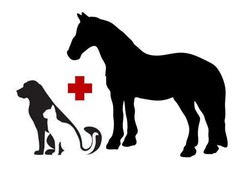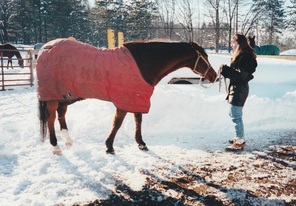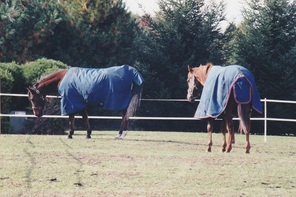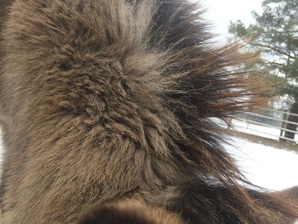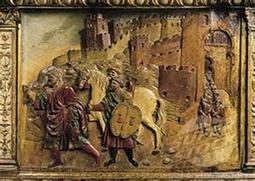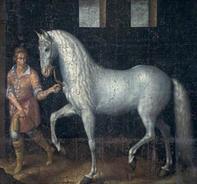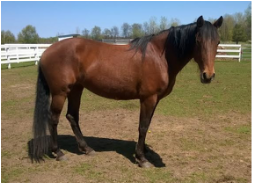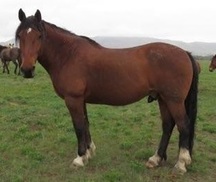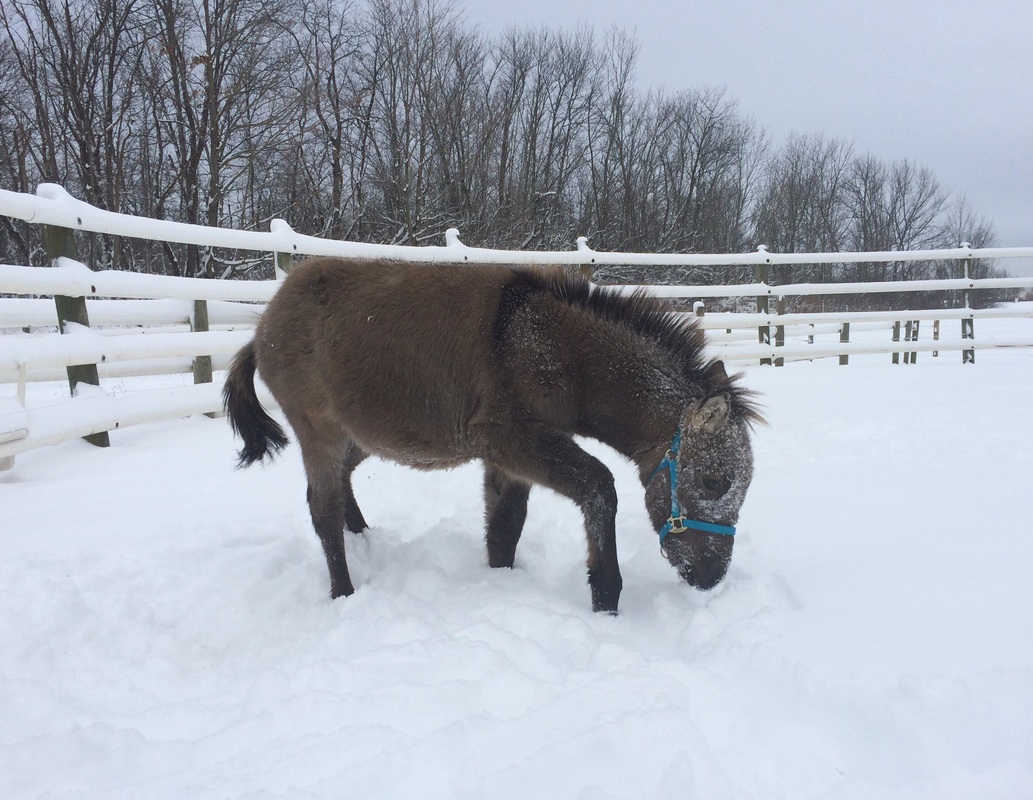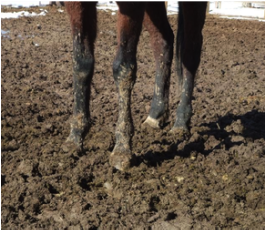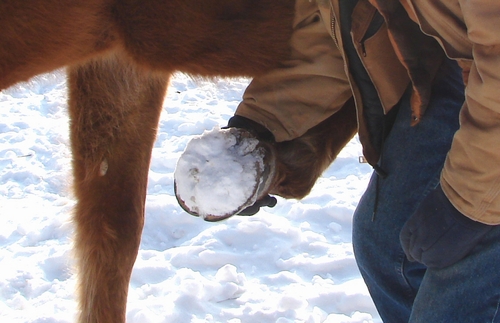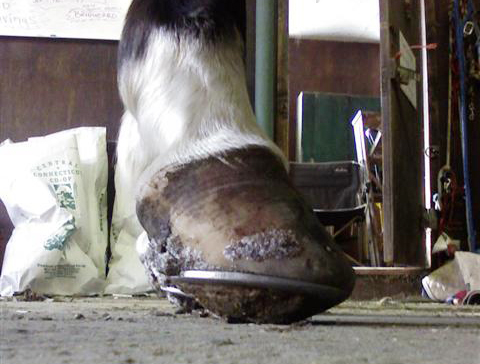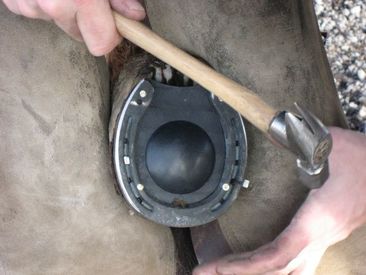by Amy Ortez, DVM
|
|
To Blanket, or Not to Blanket? |
|
To blanket or not to blanket…the age-old winter question...
Before doing anything to our horses, be it blanketing, shoeing, vaccinating or falling victim to catalogs thick as a telephone book (anyone remember them?) full of supplements for anything and everything, it’s important to ask, why? Every horse needs to be evaluated as an individual. In every aspect of equine care, the importance of individual treatment cannot be over-stated. So why blanket? The obvious answer is for warmth. Sometimes horses struggle to maintain their body heat. Whether it’s because they have been clipped for the winter or because they are older and frailer, some horses do struggle. If a horse has a heavy winter coat, the ability to get out of the wind and rain, and easily maintains their body condition, then a blanket may not be needed. If a horse is older, does not have an abundant coat, or does not have the ability to escape the weather, then a blanket is warranted. Older horses and those that tend to lose weight should be blanketed. A horse in this condition should not be spending their energy staying warm; they should be using it to feed their muscle and organs. Also, if a horse is visibly shivering, it should have a blanket. If a horse is to be turned out with a blanket on, the blanket should be wind and waterproof. Often, if the horse is relatively healthy, a light sheet that will keep them dry and prevent the wind from causing a chill is sufficient. If a horse is underweight or suffering from ill-thrift, a heavier blanket may help it be more comfortable. Again, look at each horse and assess their needs. Horses are individuals and need to be treated as such. Some are nudist and do fabulously well without much fuss while others need to be tucked in with extra TLC and effort. A good quality blanket can help keep those needing assistance feeling warm and fuzzy, inside and out! |
EQUINE ORIGINS - Part 2

As explained in Part 1 (January 2016) of this series, understanding the history and evolution of the equine helps us understand the process that gave us our modern day horses, including mustangs. This month we'll resume our equine history with a well-known event...
In fourteen hundred ninety-two
Columbus sailed the ocean blue.......
But he didn't bring any horses!! On January 2, 1492, Muhammad XII, known as King Boabdil of the Nasrid Kingdom of Granada, surrendered to the Spanish Monarchs Isabella and Ferdinand. Later that year they financed Christopher Columbus' voyage to find a direct, nautical path to Asia. It was a good year for Spain! Columbus returned from his voyage and declared that he had been to the West Indies. Eager to colonize the new territory, Columbus made his second trip in 1493 and so began the reintroduction of horses in the Americas.
The Iberian horses brought to the Central and South America would have been Jennets, light cavalry horses of Barb and Iberian draft horse descent. While modern day Mustangs have had many breeds mixed into their gene pool, it is interesting to see how they compare to the horses of 16th and 17th century Iberia.
In fourteen hundred ninety-two
Columbus sailed the ocean blue.......
But he didn't bring any horses!! On January 2, 1492, Muhammad XII, known as King Boabdil of the Nasrid Kingdom of Granada, surrendered to the Spanish Monarchs Isabella and Ferdinand. Later that year they financed Christopher Columbus' voyage to find a direct, nautical path to Asia. It was a good year for Spain! Columbus returned from his voyage and declared that he had been to the West Indies. Eager to colonize the new territory, Columbus made his second trip in 1493 and so began the reintroduction of horses in the Americas.
The Iberian horses brought to the Central and South America would have been Jennets, light cavalry horses of Barb and Iberian draft horse descent. While modern day Mustangs have had many breeds mixed into their gene pool, it is interesting to see how they compare to the horses of 16th and 17th century Iberia.
The examples above illustrate the general type of horse found on the Iberian Peninsula. Their necks are set high on the shoulder, with a natural arch and fullness to their neck. They have solid bone structure without being considered heavy. These horses are not very tall, but they have a well-rounded hind end and low set tail, perfect for quick turns and airs above the ground. These were coveted qualities in a war horse.
Similarities are also found in more modern Iberian and American mustang horses. Below are images of the author’s American-bred Andalusian and a wild-born mustang.
Similarities are also found in more modern Iberian and American mustang horses. Below are images of the author’s American-bred Andalusian and a wild-born mustang.
|
Both horses have relatively coarse head, highly placed, substantial neck and upright shoulder. The mustang has thicker bone and a more upright pastern, but the similarities in their hind end cannot be ignored.
The horse did not reenter North America until the 17th century. Over the centuries the mustang has gained genes from multiple breeds of horses but has retained expression of their Iberian ancestry. Today there are three types of “wild” horse in North America: the American mustang, the Chincoteague pony and the ponies of Sable Island off the coast of Nova Scotia, Canada. |
A READER ASKS THE VET ABOUT WINTER HOOF CARE
|
DISCLAIMER
The information contained on this website is not meant to diagnose, treat, cure, or prevent any disease. Information found on this website is meant for educational and informational purposes only. When in doubt, consult your veterinarian. |

